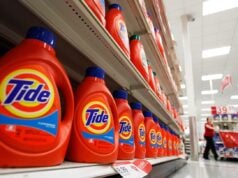
Cooling homes in Florida incurs significant expenses due to unique regional factors. Recognizing these factors aids in adopting efficient cost-saving measures.
Why Air Conditioning Bills Are High In Florida
High electricity usage, fluctuating energy rates, and ongoing cooling needs drive air conditioning costs higher in Florida.
- Extended usage periods: Homes in Florida typically operate air conditioning systems year-round due to the warm climate, unlike in other regions where systems are seasonal.
- Elevated humidity levels: High moisture content in the air requires systems to work harder to maintain comfortable indoor conditions.
- Older HVAC systems: Many households rely on outdated systems with limited energy efficiency, resulting in increased electricity consumption.
- Variable utility rates: Electricity prices fluctuate, often leading to monthly billing surges during peak summer months.
The Impact Of Florida’s Climate On Energy Usage
Florida’s subtropical climate directly impacts higher energy usage for air conditioning systems.
- High average temperatures: With annual highs exceeding 90°F in many areas, cooling systems operate constantly to provide relief.
- Frequent heat waves: Sudden temperature spikes intensify energy requirements, further elevating operational costs.
- Lengthy cooling seasons: The longer warm seasons result in extended air conditioner usage compared to states with shorter summers.
- Coastal moisture influence: Proximity to water bodies amplifies humidity, making dehumidification a critical part of cooling systems, which consumes additional energy.
Adjusting Thermostat Settings Wisely
Efficient thermostat management reduces energy costs and maintains indoor comfort in Florida’s hot, humid climate. Setting optimal temperatures and utilizing advanced technology minimizes unnecessary cooling expenses.
Best Temperatures For Comfort And Savings
78°F is ideal during the day for balancing comfort and energy efficiency when at home, according to the U.S. Department of Energy. Setting the thermostat to 85°F or higher during away hours significantly lowers cooling costs. For homes with ceiling fans, slight adjustments to higher temperatures achieve greater savings while maintaining airflow comfort.
Using Programmable Or Smart Thermostats
Programmable thermostats enable automated temperature changes during predetermined times, optimizing cooling when necessary. Smart thermostats adjust automatically based on schedules, usage patterns, or local weather. Models with remote control functionality, such as Google Nest or ecobee, allow users to modify temperatures, even while away, to enhance control and savings.
Tips For Nighttime And Daytime Settings
Set the nighttime temperature to 82°F or higher when sleeping for reduced energy use, as body temperatures naturally drop during sleep. Use cooling bedding and fans to enhance comfort. During the day, close curtains or blinds to block sunlight and prevent interior heat buildup. By prioritizing evening cooling adjustments and minimizing direct heat gain during peak daylight hours, homes retain optimal efficiency.
Improving Home Insulation
Enhancing home insulation reduces cooling costs significantly in Florida’s hot and humid climate. Proper insulation creates a barrier against heat gain, ensuring consistent indoor temperatures and less strain on air conditioning systems.
Sealing Windows And Doors
Sealing gaps in windows and doors prevents heat transfer and improves overall energy efficiency. Installing weatherstripping around doorframes, filling cracks with caulk, and applying silicone sealant to window edges are practical solutions. Focus on entry points like sliding glass doors and windows, as these areas often contribute to significant air leakage.
Adding Energy-Efficient Window Treatments
Energy-efficient window treatments reduce solar heat gain during peak sunlight hours. Options include reflective window films, thermal curtains, and cellular shades. Reflective films block up to 85% of solar heat, while thermal curtains and cellular shades provide insulation layers that trap cool air indoors. Use light-colored treatments to reflect sunlight more effectively in Florida’s intense sun.
Enhancing Attic And Wall Insulation
Improving attic and wall insulation minimizes heat infiltration from Florida’s high outdoor temperatures. Install materials like spray foam, blown-in cellulose, or fiberglass batts in attics and wall cavities. Use radiant barriers or reflective insulation in attics to deflect radiant heat, particularly in homes with metal or dark-colored roofs. Prioritize sealing attic hatches, recessed lighting, and ductwork penetrations to prevent cool air from escaping.
Regular Maintenance For Your Air Conditioning Unit
Regular upkeep prevents inefficiencies and ensures your air conditioning system operates optimally in Florida’s demanding climate. That’s where Ice C Cool Air Conditioning comes into play. Located in Margate, they serve Palm Beach, Broward, and Dade Counties.
Replacing Air Filters Regularly
Changing air filters every 30 to 90 days reduces strain on the system and maintains air quality. In Florida, increased pollen and humidity levels clog filters faster. Homeowners with pets or allergies should inspect filters more frequently, replacing them monthly to avoid restricted airflow and higher energy usage.
Cleaning Coils And Ducts
Clean evaporator coils and ducts annually to maintain cooling efficiency. Dust and debris collect on coils over time, impairing their ability to absorb heat and increasing energy consumption. Ducts can accumulate mold and dirt due to Florida’s humid conditions, obstructing airflow and affecting indoor air quality.
Checking Refrigerant Levels
Monitoring refrigerant levels prevents reduced cooling performance and higher energy costs. Refrigerant levels diminish due to leaks or prolonged use. If the system struggles to maintain set temperatures, a technician can check for and repair leaks and recharge refrigerant levels as needed.
Reducing Heat Inside Your Home
Lowering indoor temperatures reduces the strain on air conditioning systems, which improves efficiency and saves money. Strategic changes to appliances and usage habits significantly minimize heat buildup.
Switching To Energy-Efficient Appliances
Energy-efficient appliances reduce heat output and decrease energy consumption. Modern refrigerators, dishwashers, and washing machines generate less heat during operation compared to older models. ENERGY STAR-certified appliances meet strict efficiency guidelines, lowering electricity usage and reducing indoor heat. Homeowners upgrading to energy-efficient HVAC systems further reduce cooling costs while maintaining comfort.
Minimizing The Use Of Heat-Generating Appliances
Decreasing the use of heat-generating appliances reduces indoor temperature levels. Ovens, stoves, and dryers release noticeable heat during operation, increasing cooling demands. By using these appliances during cooler morning or evening hours, homeowners reduce heat buildup. Alternatives like outdoor grilling or air-drying clothes limit indoor heat output effectively.
Using LED Bulbs Instead Of Traditional Lights
Switching to LED bulbs cuts heat production while saving energy. Incandescent and halogen bulbs convert most energy into heat, raising indoor temperatures. In contrast, energy-efficient LED bulbs emit minimal heat, reducing overall cooling needs. LEDs also last longer and consume 75% less energy, making them a practical investment for Florida homes.
Tax Incentives For Energy-Efficient Upgrades
Tax credits and deductions are available for incorporating energy-efficient systems into homes. Homeowners installing qualifying improvements, such as solar panels or high-efficiency HVAC units, may claim federal tax credits including the Energy Efficient Home Improvement Credit. This credit covers 30% of installation costs, subject to annual limits, for approved projects. Contact a tax professional to leverage all available benefits and ensure compliance with IRS regulations.
Common Issues And Troubleshooting
Addressing common air conditioning issues ensures efficient operation and helps avoid unnecessary expenses in Florida’s hot climate.
Uneven Cooling In The House
Uneven cooling often results from improper airflow or insulation. Blocked air vents, dirty filters, or leaky ductwork can disrupt airflow distribution. For example, obstructions in vents can prevent rooms from receiving sufficient cool air. Insufficient home insulation, such as unsealed windows or poorly insulated walls, allows heat to infiltrate, making certain areas warmer. To resolve these issues, inspect vents for blockages, replace clogged filters every 30 to 90 days, and test ducts for leaks. Sealing gaps in windows and adding insulation can also improve temperature uniformity.
High Energy Bills Despite Adjustments
Persistently high energy bills indicate underlying inefficiencies in the cooling system. Common causes include low refrigerant levels, dirty evaporator coils, or an overworked compressor. For instance, an air conditioner with depleted refrigerant can struggle to cool efficiently. Old or malfunctioning thermostat settings can also lead to excessive energy use. To troubleshoot, clean evaporator coils and schedule refrigerant level checks. Confirm that programmable or smart thermostats align with energy-saving recommendations, such as maintaining 78°F during the day. Annual inspections by HVAC specialists can uncover hidden problems impacting energy consumption.
Signs Indicating AC System Upgrade Might Be Needed
Frequent breakdowns, inconsistent performance, or rising energy use signal aging or inefficient air conditioning systems. Systems over 10-15 years old, particularly those without ENERGY STAR certification, often consume more energy and struggle in Florida’s humid climate. Inadequate cooling capacity can also contribute, as undersized units cannot handle extreme heat efficiently. Homeowners should evaluate repair costs compared to replacement expenses and consider upgrading to high-efficiency models for better performance. Professionals can assist in sizing the AC appropriately to ensure comfortable cooling and lower bills.
Conclusion
Saving money on air conditioning in Florida’s challenging climate is achievable with the right strategies and tools. By adopting energy-efficient practices, investing in smart technologies, and staying proactive with maintenance, homeowners can enjoy a comfortable living environment without overspending. Small changes, combined with long-term investments, can lead to significant savings while promoting sustainability. With these tips, managing cooling costs becomes a practical and rewarding effort.
Disclaimer
The information contained in South Florida Reporter is for general information purposes only.
The South Florida Reporter assumes no responsibility for errors or omissions in the contents of the Service.
In no event shall the South Florida Reporter be liable for any special, direct, indirect, consequential, or incidental damages or any damages whatsoever, whether in an action of contract, negligence or other tort, arising out of or in connection with the use of the Service or the contents of the Service. The Company reserves the right to make additions, deletions, or modifications to the contents of the Service at any time without prior notice.
The Company does not warrant that the Service is free of viruses or other harmful components












